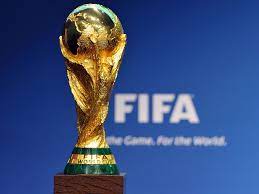 The FIFA World Cup, often simply called the World Cup, is an international association football competition between the senior men’s national teams of the members of the Fédération Internationale de Football Association (FIFA), the sport's global governing body. The tournament has been held every four years since the inaugural tournament in 1930, with the exception of 1942 and 1946 due to the Second World War.
The FIFA World Cup, often simply called the World Cup, is an international association football competition between the senior men’s national teams of the members of the Fédération Internationale de Football Association (FIFA), the sport's global governing body. The tournament has been held every four years since the inaugural tournament in 1930, with the exception of 1942 and 1946 due to the Second World War.
The trophy has been won by eight national teams. Brazil, with five wins, are the only team to have played in every tournament. The other World Cup winners are Germany/West Germany and Italy, with four titles each; Argentina, with three titles; France and Uruguay, each with two titles; and England and Spain, with one title each.
My personal experience
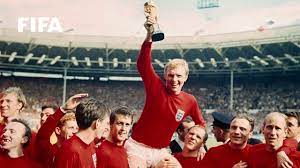 The first World Cup I remember watching was in 1966, when I was 16. England won that year, the one and only time they have managed it.
The first World Cup I remember watching was in 1966, when I was 16. England won that year, the one and only time they have managed it.
I watched it in 1970, when it was held in Mexico. England were hot favourites, but went out controversially against Germany after Sir Alf Ramsay, the England manager, made some fateful substitutions.
In 1974 I was doing exams for my PGCE so couldn’t watch it much.
1978, I can’t remember. The following World Cups in 1982, 1986, 1990, and 1994 are also a blur.
In 1998 I was at a conference in Liverpool, but managed to find a pub showing the key match involving England and Argentina, when David Beckham was sent off.
In 2002 the joint hosts were South Korea and Japan, with Brazil emerging as winners.
2006, in Germany, is a mystery. Italy won.
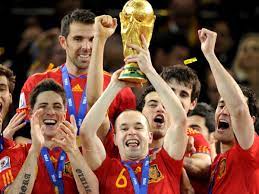 In 2010, retired and living in Spain, I was interested again. Shame about the appalling decision of the referee in disallowing Frank Lampard’s "goal" against old enemy Germany, who went on to win the game. That tournament was in South Africa and was won by Spain.
In 2010, retired and living in Spain, I was interested again. Shame about the appalling decision of the referee in disallowing Frank Lampard’s "goal" against old enemy Germany, who went on to win the game. That tournament was in South Africa and was won by Spain.
I also followed the 2014 tournament closely. My German wife Rita, who claims to hate all sport, watched enthusiastically as Germany thrashed hosts Brazil 7-1 and went on to win the final 1-0 against Argentina.
In 2018 the tournament was held in Russia. England flattered to deceive, yet got to the semi-final, before falling to Croatia, who lost to France in the final.
The 2022 World Cup was postponed to 2023, because of the Covid pandemic. The tournament was held controversially in Dakar. Argentina beat France in the final.
The next World Cup finals will be held in the United States, Canada and Mexico, marking the first time a World Cup has been shared by three host nations. The 2026 tournament will be the biggest World Cup ever held, with 48 teams playing 104 matches. Sixty matches will take place in the USA, including all matches from the quarter-finals onward, while Canada and Mexico will host 10 games each.
2014 FIFA World Cup – the best ever?
Fans and pundits alike consider this edition of the World Cup to be one of the best ever held.
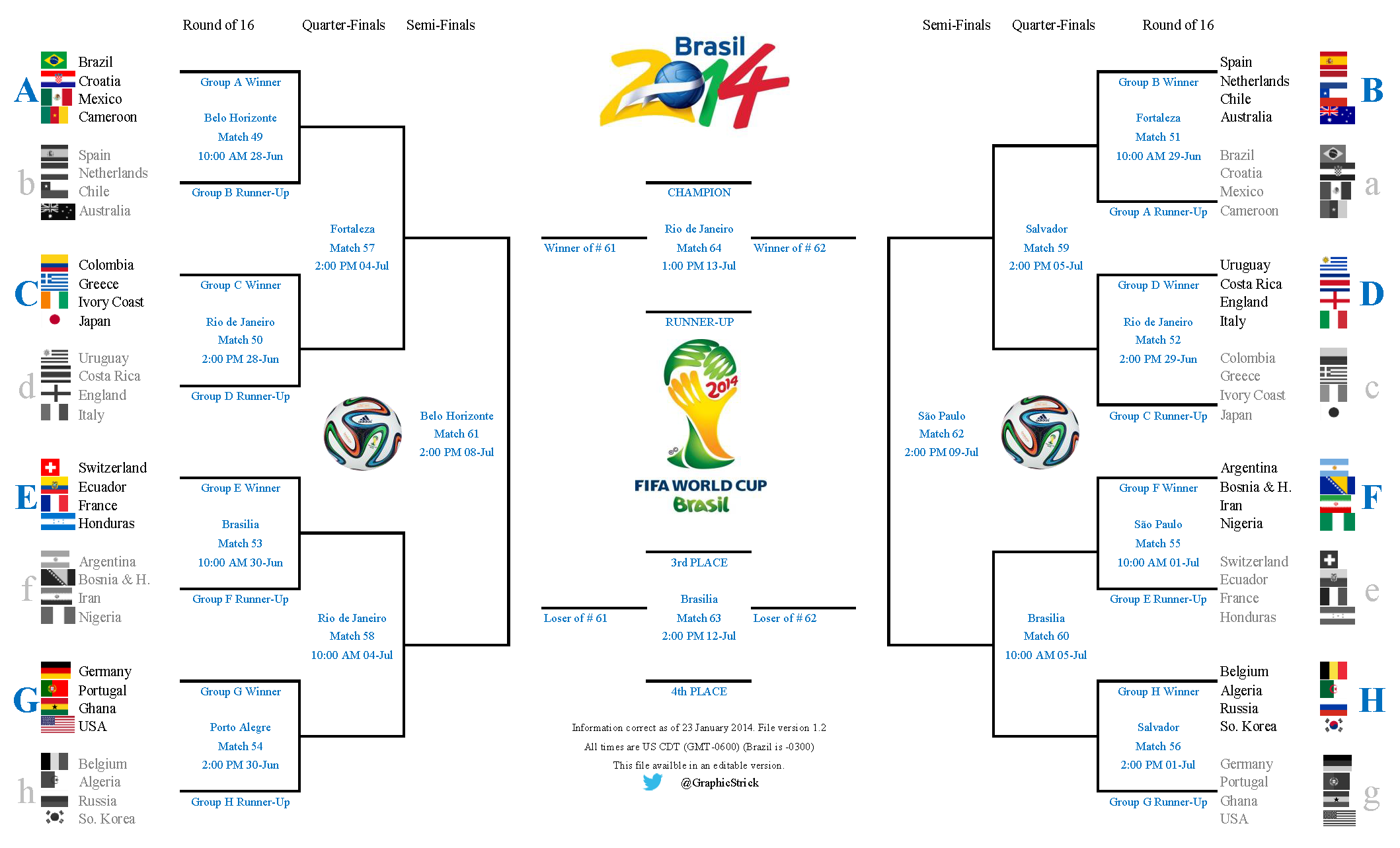 The 2014 tournament was the 20th FIFA World Cup. It took place in Brazil from 12 June to 13 July 2014, after the country was awarded the hosting rights in 2007. It was the second time that Brazil had staged the competition, the first being in 1950 (I missed that one, as I was less than four weeks old!), and the fifth time that it was held in South America.
The 2014 tournament was the 20th FIFA World Cup. It took place in Brazil from 12 June to 13 July 2014, after the country was awarded the hosting rights in 2007. It was the second time that Brazil had staged the competition, the first being in 1950 (I missed that one, as I was less than four weeks old!), and the fifth time that it was held in South America.
31 national teams advanced through qualification to join the host nation in the final tournament. A total of 64 matches were played in 12 venues in cities across Brazil.
For the first time at a World Cup finals, match officials used goal-line technology, as well as vanishing spray for free kicks. The country welcomed 1 million visitors from 202 countries.
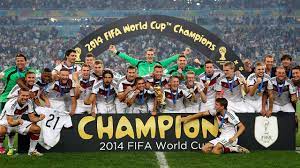 Spain, the defending champions, were eliminated at the group stage, along with England and Italy. Uruguay were eliminated in the round of 16, and France exited in the quarter-finals. Host nation Brazil were thrashed by Germany 7–1 in the semi-finals and eventually finished in fourth place.
Spain, the defending champions, were eliminated at the group stage, along with England and Italy. Uruguay were eliminated in the round of 16, and France exited in the quarter-finals. Host nation Brazil were thrashed by Germany 7–1 in the semi-finals and eventually finished in fourth place.
In the 2014 final, Germany defeated Argentina 1–0 after extra time to win the tournament and secure the country's fourth world title, the first after German reunification in 1990.
Germany became the first European team to win a World Cup staged in the Americas, and this result marked the third consecutive title won by a European team, after Italy in 2006 and Spain in 2010.
Bits and pieces
Sponsorship
The World Cup attracts major sponsors such as Coca-Cola, McDonald’s and Adidas. For these companies and many more, being a sponsor strongly impacts their global brands. Host countries typically experience a multimillion-dollar revenue increase from the month-long event.
The governing body of the sport, FIFA, generated $4.8 billion in revenue from the 2014 tournament, and $6.1 billion from the 2018 tournament.
Match balls, mascots, logos and songs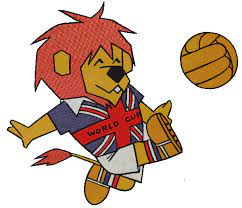
Match balls have been manufactured by Adidas since the 1970 World Cup.
Each FIFA World Cup since 1966 has had its own mascot or logo. World Cup Willie, the mascot for the 1966 competition, was the first.
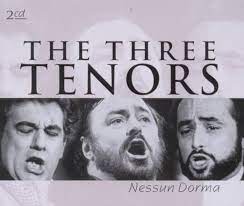
Each tournament also has an official World Cup song, which has been performed by artists ranging from Shakira to Will Smith.
Other songs, such as “Nessun Dorma”, performed by The Three Tenors at four World Cup concerts, have also become identified with the tournament.
The Three Tenors are Spaniards Placido Domingo and Jose Carreras together with Italian Luciano Pavarotti, whose nickname was "Big Lucy".
Coming World Cups
In 2026, the finals will be held in Canada, USA and Mexico.
In 2030 it’s the turn of Morocco, Portugal and Spain and .....
in 2034 it will be Saudi Arabia.
I wonder if I’ll still be around for all of them …..?
© Sporty Sam
Acknowledgements:
Amazon
Paul Whitelock
Pinterest
Sportsnet
The Independent
Wikipedia
worldcupwillie.com
YouTube
Tags:
1966, 1970 World Cup, 2014 FIFA World Cup, 2022 World Cup, Adidas, Argentina, "Big Lucy", Brazil, England, Fédération Internationale de Football Association, FIFA World Cup, France, German reunification, Germany, goal-line technology, Independent, Italy, logos, mascots, Match balls, “Nessun Dorma”, official World Cup song, Pinterest, Second World War, Shakira, songs, Spain, Sponsorship, Sportsnet, Sporty Sam, South America, The Three Tenors, Uruguay, vanishing spray, Wikipedia, Will Smith, World Cup, World Cup Willie, YouTube